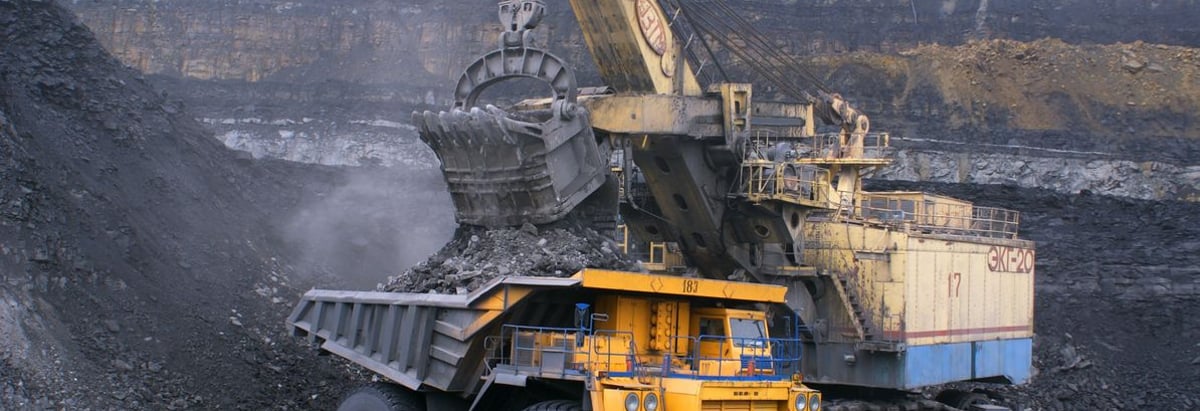- United States
- /
- Metals and Mining
- /
- NYSE:ARCH
Arch Coal Inc (NYSE:ARCH) Delivered A Better ROE Than The Industry, Here’s Why

With an ROE of 35.81%, Arch Coal Inc (NYSE:ARCH) outpaced its own industry which delivered a less exciting 10.47% over the past year. Though, the impressiveness of ARCH’s ROE is contingent on whether this industry-beating level can be sustained. This can be measured by looking at the company’s financial leverage. With more debt, ARCH can invest even more and earn more money, thus pushing up its returns. However, ROE only measures returns against equity, not debt. This can be distorted, so let’s take a look at it further. Check out our latest analysis for Arch Coal
Breaking down Return on Equity
Return on Equity (ROE) is a measure of Arch Coal’s profit relative to its shareholders’ equity. An ROE of 35.81% implies $0.36 returned on every $1 invested, so the higher the return, the better. Investors seeking to maximise their return in the Coal and Consumable Fuels industry may want to choose the highest returning stock. However, this can be deceiving as each company has varying costs of equity and debt levels, which could exaggeratedly push up ROE at the same time as accumulating high interest expense.
Return on Equity = Net Profit ÷ Shareholders Equity
Returns are usually compared to costs to measure the efficiency of capital. Arch Coal’s cost of equity is 8.94%. This means Arch Coal returns enough to cover its own cost of equity, with a buffer of 26.87%. This sustainable practice implies that the company pays less for its capital than what it generates in return. ROE can be broken down into three different ratios: net profit margin, asset turnover, and financial leverage. This is called the Dupont Formula:
Dupont Formula
ROE = profit margin × asset turnover × financial leverage
ROE = (annual net profit ÷ sales) × (sales ÷ assets) × (assets ÷ shareholders’ equity)
ROE = annual net profit ÷ shareholders’ equity
Basically, profit margin measures how much of revenue trickles down into earnings which illustrates how efficient the business is with its cost management. Asset turnover shows how much revenue Arch Coal can generate with its current asset base. Finally, financial leverage will be our main focus today. It shows how much of assets are funded by equity and can show how sustainable the company’s capital structure is. We can determine if Arch Coal’s ROE is inflated by borrowing high levels of debt. Generally, a balanced capital structure means its returns will be sustainable over the long run. We can examine this by looking at Arch Coal’s debt-to-equity ratio. Currently the ratio stands at 48.95%, which is very low. This means Arch Coal has not taken on leverage, and its above-average ROE is driven by its ability to grow its profit without a huge debt burden.
Next Steps:
ROE is one of many ratios which meaningfully dissects financial statements, which illustrates the quality of a company. Arch Coal exhibits a strong ROE against its peers, as well as sufficient returns to cover its cost of equity. Its high ROE is not likely to be driven by high debt. Therefore, investors may have more confidence in the sustainability of this level of returns going forward. Although ROE can be a useful metric, it is only a small part of diligent research.
For Arch Coal, I've put together three essential factors you should further research:
- 1. Financial Health: Does it have a healthy balance sheet? Take a look at our free balance sheet analysis with six simple checks on key factors like leverage and risk.
- 2. Valuation: What is Arch Coal worth today? Is the stock undervalued, even when its growth outlook is factored into its intrinsic value? The intrinsic value infographic in our free research report helps visualize whether Arch Coal is currently mispriced by the market.
- 3. Other High-Growth Alternatives : Are there other high-growth stocks you could be holding instead of Arch Coal? Explore our interactive list of stocks with large growth potential to get an idea of what else is out there you may be missing!
New: Manage All Your Stock Portfolios in One Place
We've created the ultimate portfolio companion for stock investors, and it's free.
• Connect an unlimited number of Portfolios and see your total in one currency
• Be alerted to new Warning Signs or Risks via email or mobile
• Track the Fair Value of your stocks
Have feedback on this article? Concerned about the content? Get in touch with us directly. Alternatively, email editorial-team@simplywallst.com
Simply Wall St analyst Simply Wall St and Simply Wall St have no position in any of the companies mentioned. This article is general in nature. We provide commentary based on historical data and analyst forecasts only using an unbiased methodology and our articles are not intended to be financial advice. It does not constitute a recommendation to buy or sell any stock and does not take account of your objectives, or your financial situation. We aim to bring you long-term focused analysis driven by fundamental data. Note that our analysis may not factor in the latest price-sensitive company announcements or qualitative material.
About NYSE:ARCH
Arch Resources
Engages in the production and sale of metallurgical products.
Very undervalued with flawless balance sheet.
Similar Companies
Market Insights
Community Narratives




